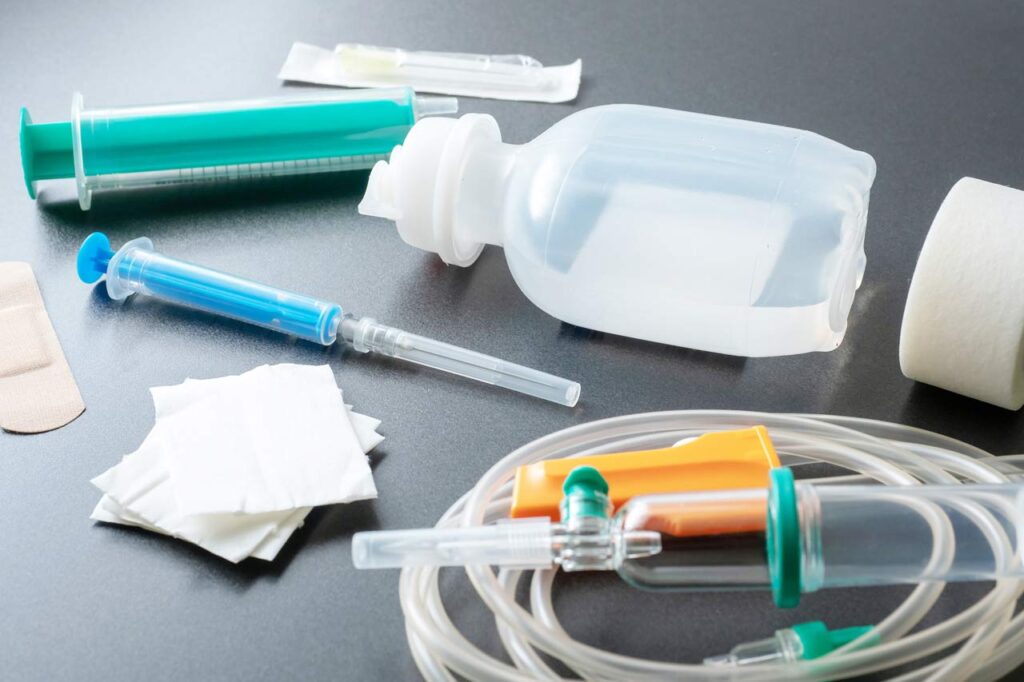Single-use medical devices
To improve patient safety by reducing the risk of cross-contamination

Single-use medical devices are medical equipment and instruments that are used only once in a hospital or clinic and then disposed. Some medical devices are difficult to sterilize or reprocess to make them safe to use on another patient, so the alternative was single-use devices.
Using disposable items improves patient safety by eliminating the risk of patient-to-patient contamination because the item is discarded and not used on another patient. The most important single-use devices are syringe needles, scalpel blades, gauze and others.
The goal of using single-use medical supplies is to prevent germs and viruses from spreading from one patient to another, which is essential in infection control.
These medical devices have become popular in the world with the spread of the coronavirus pandemic and the need to limit its spread, so the focus was on single-use medical devices and their disposal after each use, as part of the global efforts to break the cycle of spreading the virus from one patient to another.
Single-use devices or equipment should not be reused, and they should only be used on one patient during a medical intervention or a single medical procedure and then disposed and should not be used again even on the same patient. Reusing it affects its efficacy and the safety of the medical procedure itself, exposing the patient and the doctor to unnecessary health risks.
This type of medical supplies is a reliable option to ensure that all devices are not contaminated and that germs and microbes are not transferred from one patient to another, which reduces the chances of cross-contamination.
Single-use medical devices in hospitals and health facilities instead of those that are used again after sterilization have numerous benefits.
Improving patient safety
The main priority for all health workers is to eliminate preventable diseases during the provision of healthcare that may develop in patients while receiving medical services, which increases the need for safe and effective tools.
Single-use medical devices reduce the risk of cross-contamination, including infections during surgery and those that can be transmitted during medical procedures. Thus, these single-use medical supplies can alleviate healthcare providers’ concerns regarding the cleanliness of their surgical instruments. With reduced risk of contamination and increased infection control, single-use devices can improve patient safety and overall quality of care.
Saving time
Single-use medical supplies reduce the burden of sterilization and disinfection after any medical intervention, which saves time because they are disposed immediately after use and there is no need to clean them after each use. Hospital workers and healthcare providers don’t have to spend time decontaminating and sterilizing the way they do with reusable devices.
Saving time with minimal preparations or work that follows any medical intervention, all factors increase the efficiency of medical facilities and allow them the opportunity to serve more patients. Healthcare facilities can easily adhere to scheduling and avoid any kind of incidents.
Reducing cost
Although single-use medical supplies may be more expensive than reused ones, the long-term benefits remain the most important for healthcare providers, especially in terms of reducing cross-contamination.
In addition, relying on this type of supplies eliminates the cost of reprocessing, sterilization, and maintenance of the machines used for this purpose, as well as saving time. All these benefits make it difficult to calculate the financial cost as these tools simplify the medical procedure for healthcare providers. Therefore, we can say that over time, reusable supplies provide the same quality of services as single-use supplies.














